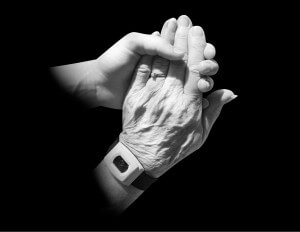Person-Centered Care In Nursing Homes
Until the 1980s, nursing homes were run like institutions, with uniform rules for everyone who lived there. However, this led to widespread patient abuse and neglect. In 1987, Congress passed a variety of reforms that required nursing homes to move to a personalized care model. What does such a model of patient care mean for residents and their families?
Residents Get More Say in What They Do
Residents have an unprecedented level of say when it comes to how they live while in a nursing facility. In some residences, they can decide when they go to bed, what they wear and in which activities they participate. A resident may also have some say as to what he or she eats each day or whether or not to leave the facility temporarily with friends and family members. 
Relationships Are Valued Above All Else
A resident should have a strong relationship with others living in the nursing home as well as with the people providing their care. Ideally, residents will live in units of no more than 10-15 people. This enables everyone to feel more like they are at home as opposed to in an institution. Furthermore, the same nursing aides should work with a given patient at all times to provide consistency and the best possible care.
Nurses are Empowered to Make Decisions
Instead of following care directives created by upper management, nurses are empowered to make decisions that are in the best interest of the patients, ensuring that each resident gets the personalized treatment plan that they need and deserve. This is part of a pattern that encourages culture change within nursing homes that puts everyone on one level when it comes to decision-making. When necessary, nurses and other staff can collaborate and work on teams to deliver the best possible results for residents. This will hopefully reduce cases of nursing home abuse and/or neglect.
Increased Communications Trumps Increased Funding
Research conducted by the National Institutes of Health has shown that person-centered care was driven mostly by a commitment by management to encourage changes in culture. Direct communication about proposed changes and positive attitudes toward them made it easier for nursing homes and other managed care facilities to achieve their goals. This was true regardless of the amount of training provided to staff or the amount of money allocated to achieving desired changes.
Personalized care has changed the way that nursing home residents interact with each other and with staff. Instead of a one-size-fits-all approach, the needs of the individual are taken into consideration to improve patient care and allow residents to develop relationships while at the facility.






 Is your car ready to drive on roads covered in snow or ice? You should check your tires to make sure that they are properly inflated and have sufficient tread. Furthermore, check your windshield wipers and fluid levels to make sure that your windshield will stay clear if it snows while you are driving. Finally, make sure that your heater works properly as you want to make sure that any ice buildup on your vehicle can be melted away quickly to give you better vision while driving.
Is your car ready to drive on roads covered in snow or ice? You should check your tires to make sure that they are properly inflated and have sufficient tread. Furthermore, check your windshield wipers and fluid levels to make sure that your windshield will stay clear if it snows while you are driving. Finally, make sure that your heater works properly as you want to make sure that any ice buildup on your vehicle can be melted away quickly to give you better vision while driving.